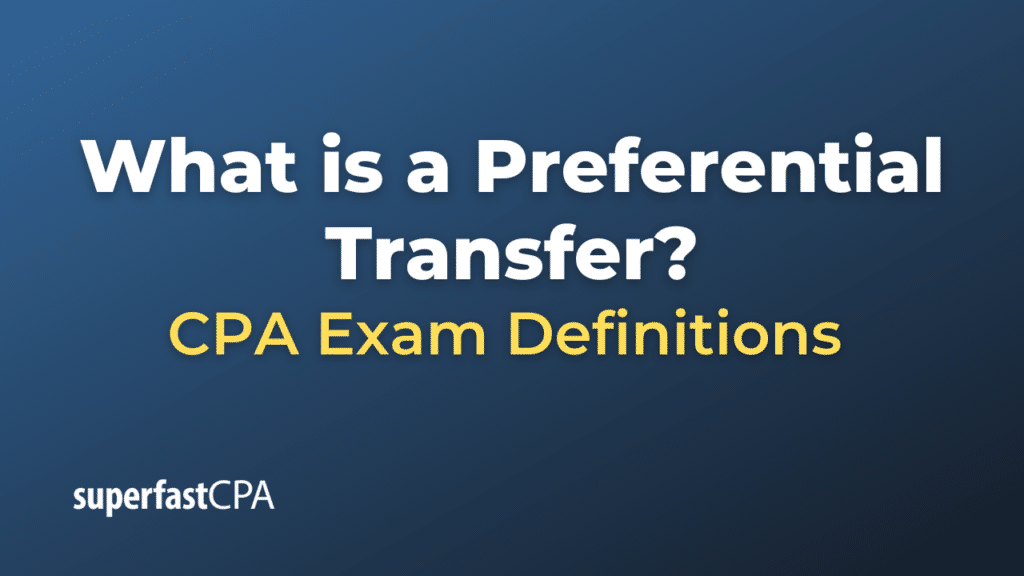Preferential Transfer
A preferential transfer is a term used in bankruptcy law to describe certain payments or transfers of property made by a debtor before filing for bankruptcy that favor one creditor over others.
Under the United States Bankruptcy Code, a trustee may avoid any transfer of an interest of the debtor in property:
- To or for the benefit of a creditor;
- For or on account of an antecedent debt owed by the debtor before such transfer was made;
- Made while the debtor was insolvent;
- Made on or within 90 days before the date of the filing of the petition (or between 90 days and one year if the creditor was an insider); and
- That enables such creditor to receive more than such creditor would receive if the case were a case under chapter 7 of this title, the transfer had not been made, and such creditor received payment of such debt to the extent provided by the provisions of this title.
The purpose of the avoidance of preferential transfers is to prevent a debtor from favoring certain creditors over others before filing for bankruptcy. By avoiding the transfer, the trustee can recover the property or its value and distribute it among all the creditors, ensuring fair treatment.
However, there are some exceptions to the rule on preferential transfers, and not all transfers that meet the above criteria will be avoided. For example, transfers made in the ordinary course of business or financial affairs of the debtor and the transferee, or small transfers, might be exempted from being considered as preferential. These exceptions vary by jurisdiction, so local law should be consulted for more specifics.
Example of a Preferential Transfer
Imagine there is a company named ABC Corp. that’s struggling financially and owes money to multiple creditors. Among these creditors are Bank X, which provided a substantial business loan, and Supplier Y, who regularly supplies raw materials.
ABC Corp. realizes that bankruptcy is unavoidable, but before filing, it uses its remaining cash to fully repay the debt it owes to Supplier Y. ABC Corp. chooses to pay Supplier Y because they’ve had a long-standing relationship and ABC Corp. hopes to continue doing business with them after the bankruptcy.
Shortly after, ABC Corp. files for bankruptcy. During the bankruptcy proceedings, the court-appointed trustee reviews the company’s transactions made within 90 days prior to the bankruptcy filing (or up to a year for insiders). The trustee notices the payment to Supplier Y and recognizes it as a preferential transfer because it meets the criteria – it was made to a creditor on account of an antecedent debt while ABC Corp. was insolvent, within 90 days prior to the bankruptcy filing, and it allowed Supplier Y to receive more than it would have in a Chapter 7 liquidation scenario.
The trustee, aiming for equitable distribution among all creditors, can then take action to recover this payment from Supplier Y so the money can be redistributed among all creditors, including Bank X.
It’s worth noting that specific rules and exceptions may apply, and actual legal proceedings can be more complex than this simplified example. Also, while this example is based on U.S. law, other countries may have different laws regarding preferential transfers.













